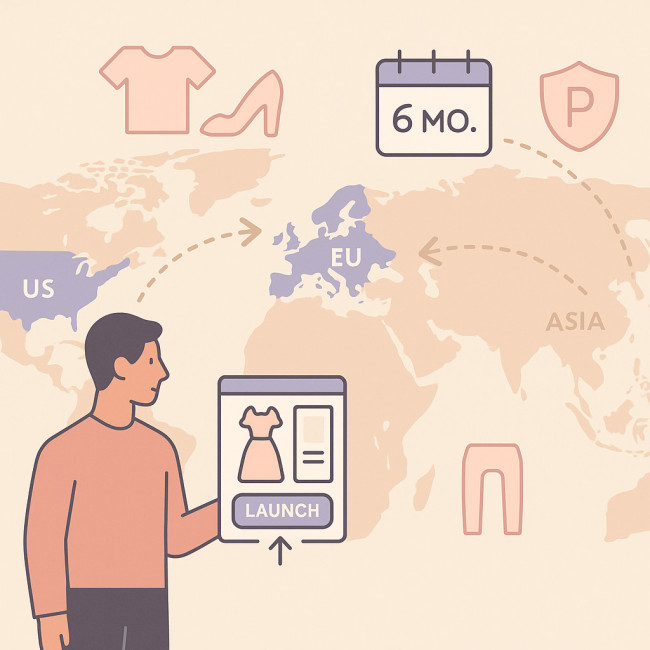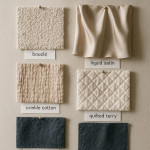Legal basics: understanding design registrations and ways to protect collections
Protecting the visual appearance of a product line is easier—and less costly—than most creators think. This guide demystifies design registrations, compares them with other intellectual-property (IP) tools, and offers an actionable roadmap to secure your next collection at home and abroad.
Why protecting a design early is non-negotiable
Fast fashion knock-offs, 3D printing and global marketplaces can replicate your silhouette weeks after launch. A clear protection plan:
- Preserves exclusivity and margin.
- Gives leverage when negotiating royalty clause playbooks.
- Reassures investors and retailers that you own what you pitch.
- Boosts brand value if you plan to license your art via licensing fee benchmarks for surface patterns.
The four legal shields every designer should know
1. Registered designs
A registered design legally protects the appearance of a product—lines, contours, colours, texture or ornamentation—for up to 25 years in many jurisdictions. Key wins:
- Fast examination: 48 h in the UK and 10 days in the EU for standard filings.
- Low cost: roughly €350 for a single Community design.
- Deterrent effect: infringers face higher damages once registration exists.
2. Unregistered design right (UDR)
Automatically arises on first disclosure in qualifying territories (e.g., three years in the EU, 15 in the UK). Useful when time-to-market beats paperwork, but enforcement requires proof of copying and priority.
3. Copyright safety net
Applies to original works of art, including textile prints and sculptural bag handles. It is free and lasts the author's life plus 70 years, yet covers only aspects deemed artistic, not functional form.
4. Trade marks for collection names & logos
Securing a word or figurative mark prevents rivals from piggy-backing on your reputation. Unlike design rights, it can be renewed indefinitely.
Quick-glance comparison
| Protection tool | Scope | Duration | Typical cost (EU) | Proof needed to enforce |
|---|---|---|---|---|
| Registered Design | Overall look & feel | 5 × 5 years (max 25) | €350 first design, €175 each add-on | Registration certificate |
| Unregistered Design | Look & feel | 3 years (EU) | Free | Proof of copying + date of first disclosure |
| Copyright | Original artwork elements | Life + 70 years | Free | Proof of originality |
| Trade mark | Name, logo, slogan | 10 years – renewable | €850 class 1, €50 per extra class | Registration certificate + use |
Step-by-step: filing a design registration
- Check novelty. Search EUIPO, WIPO and national databases to confirm no identical design exists.
- Prepare representations. Six clear views (front, back, sides, top, bottom) on a neutral background. Compress files under 2 MB for seamless e-filing.
- Select deferment (optional). You can keep the design secret for up to 30 months after filing while you finalise prototypes.
- File online with EUIPO, UK IPO, USPTO or WIPO's Hague System. Keep the e-receipt as immediate proof.
- Mark products. Add “RCD No. XXXXXX” on labels to enhance deterrence.
- Calendar renewals. Set reminders every five years in your IP spreadsheet or task manager.
Global strategy: timing your disclosures

Because UDR activates on first disclosure inside the EU or UK, consider launching digitally in those regions first, then globally within six months. Designers who ship samples abroad can rely on risk-free sample agreements that include NDAs and marking instructions. Timing also matters because some jurisdictions impose absolute novelty; once a photo leaks on a blog before filing, the right evaporates. By sequencing disclosures, you buy time to test market appetite while keeping statutory options open, a proven tactic for independent studios that lack the litigation budgets of conglomerates.
Territorial bundles worth considering
- Hague System – one application, up to 96 countries.
- ASEAN package – individual filings, but aligned formalities assist fast fashion brands entering Vietnam, Indonesia and Thailand.
- Madrid + Hague combo – couples trade mark and design filings for full-stack protection.
Beyond registrations: practical deterrents
Paper rights are powerful, yet complement them with commercial tactics:
- Release exclusive-rights clauses in limited runs.
- Add hidden markers (QR chips, holographic labels) that help prove source.
- Publish high-resolution lookbooks on the training hub for clothing designers; timestamped uploads strengthen priority evidence.
- Use tiered NDAs with manufacturers and freelance pattern makers.
- Monitor marketplaces weekly; send notice-and-takedown letters within 24 h of spotting copies.
Case study: capsule collection with 12 SKUs
A London-based knitwear studio planned a January drop. They:
- Filed one UK registered design covering the repeating cable-knit pattern (€60 fast-track).
- Bundled 11 product variants under a single EUIPO multiple application (total €525).
- Trademarked the collection name in class 25 (clothing) and 35 (retail).
- Launched a countdown on Instagram aimed at EU followers first; global launch followed two weeks later.
- Added watermarked 3D renders to press releases, not the flat tech packs.
Result: when a marketplace listing copied the sweater, a takedown was granted within 48 h using the RCD number—no costly court action.
Common pitfalls and how to avoid them
- Public previews before filing. Even a lookbook email can destroy novelty.
- Incorrect drawings. Shadows or props may limit scope.
- Forgetting renewals. Rights lapse irreversibly after grace periods.
- Confusing design with patent. Patents protect function; designs protect appearance.
- Over-share with manufacturers. Use staged disclosures and serial numbers.
FAQ
- Do I need a lawyer to file a registered design?
- No. The EUIPO and UK IPO portals are designer-friendly. However, a specialist can refine claim scope and boost success if your design is complex.
- Can I protect colour variations under one registration?
- Yes, if the shape remains identical. Submit greyscale images and claim all colours so future palettes are covered.
- Is a blockchain timestamp enough to defend my design?
- It proves existence at a date but offers no statutory right. Pair it with formal registration.
- How long can I delay publication after filing?
- Up to 30 months in the EU; 12 months in the UK; varies elsewhere.
- What if my collection mixes functional hardware and decorative panels?
- File separate patents (for function) and design registrations (for appearance), then cross-license internally.
Quick self-assessment quiz
Take the next step
Registering a design can be done during a lunch break. Download your filing checklist, block 30 minutes this week, and secure your collection before the first teaser hits social media.
Ready to act? Turn protection into profit—your designs deserve it.











